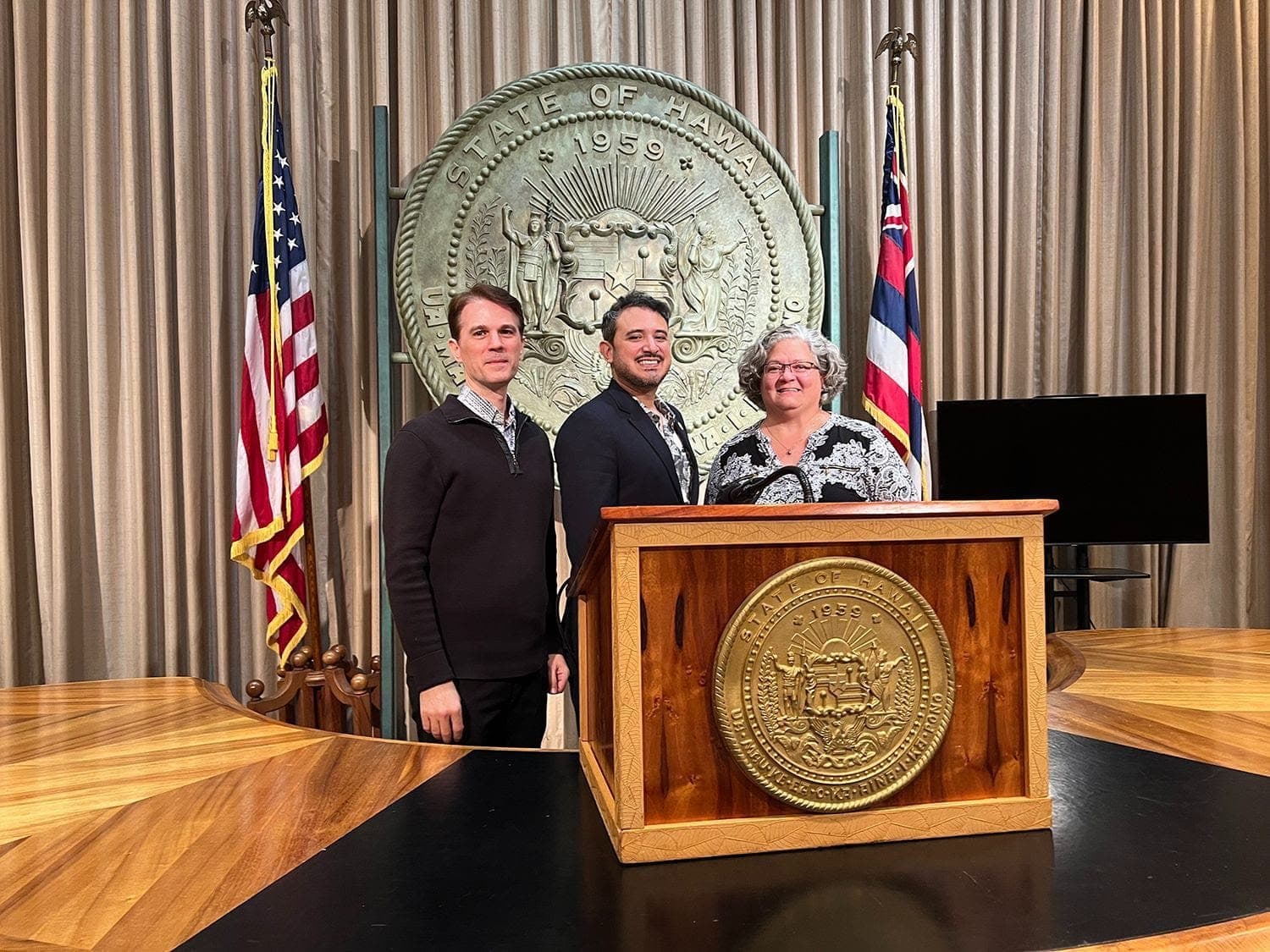
News
By Michael Rodriguez, March 6, 2024
Embarking on a trip to Hawaiʻi last week, I found myself amidst the lush landscapes and warm aloha spirit, tasked with a mission that resonates deeply with our work at Smart Growth America. Partnering with AARP Hawaiʻi, we delved into the complexities of affordable housing in the state, a challenge that is both urgent and pivotal to our mission. It was an honor to present our findings and engage in a meaningful dialogue with the Hawaiʻi State Senate Committee on Housing, sharing insights that could pave the way for sustainable housing solutions.

Our research, a collaborative effort with AARP Hawaiʻi, unveiled a concerning forecast: by 2030, Hawaiʻi could see the expiration of affordability covenants for 1,442 rental and homeownership units, with an additional 10,000 units at risk by 2045. This potential loss underscores the critical need for proactive measures to secure funding or incentives to maintain these homes' affordability.
During my testimony, I emphasized the importance of preemptive planning. Our ability to track the expiration of affordability subsidies presents an opportunity to mitigate the risk of residents being left without viable housing options. With 57% of Hawaiʻi's affordable housing benefiting from state funding and 43% from federal funding, it's clear that Hawaiʻi continues to rely on subsidies from past decades. This reliance highlights the need for innovative solutions to sustain and expand affordable housing.
The state of Hawaiʻi's public housing is particularly alarming. Without substantial investment in maintenance and retrofitting, these units risk becoming uninhabitable. The move toward public-private partnerships for new affordable units is promising, but it's crucial that these efforts are complemented by strategies to preserve existing affordable housing.
In my direct testimony to the committee, I shared the stark realities faced by Hawaiʻi residents. The state's housing market, with median home values exceeding $750,000, places a tremendous burden on local families, making homeownership an elusive dream for many. The rental market is no less daunting, with the cost of a two-bedroom home nearing $2,000 a month. These exorbitant costs have driven many native Hawaiian families and residents to relocate, further exacerbating the state's housing crisis.
Our report sheds light on the dwindling stock of affordable units in Hawaiʻi, which currently represents less than 3% of the state's total housing stock. Without intervention, Hawaiʻi stands to lose nearly 80% of its subsidized homes by 2045, a loss that would have profound implications for thousands of residents reliant on government programs for affordable housing.
Addressing this crisis requires a multifaceted approach, leveraging policy tools, innovative finance and construction strategies, and zoning reforms. We must prioritize preserving affordability, particularly in subsidized units, through direct investment, education programs for property owners, and leveraging federal programs with sufficient state funding.
The challenges posed by climate change add another layer of complexity to Hawaiʻi's housing affordability crisis. As residents face increasing risks from severe weather events and wildfires, the costs of climate adaptation and preparedness could further strain household budgets.
The path forward for Hawaiʻi in addressing its housing crisis lies in the collective embrace of innovative, smart growth strategies that honor the spirit of the islands. By integrating community, sustainability, and inclusivity, Hawaiʻi can forge a future where every resident finds solace and stability in their home. At Smart Growth America, we stand ready to support Hawaiʻi in turning the tide of this crisis, fostering a new era of housing prosperity that reflects the beauty and resilience of the islands.
Related News

© 2025 Smart Growth America. All rights reserved
Site By3Lane Marketing








